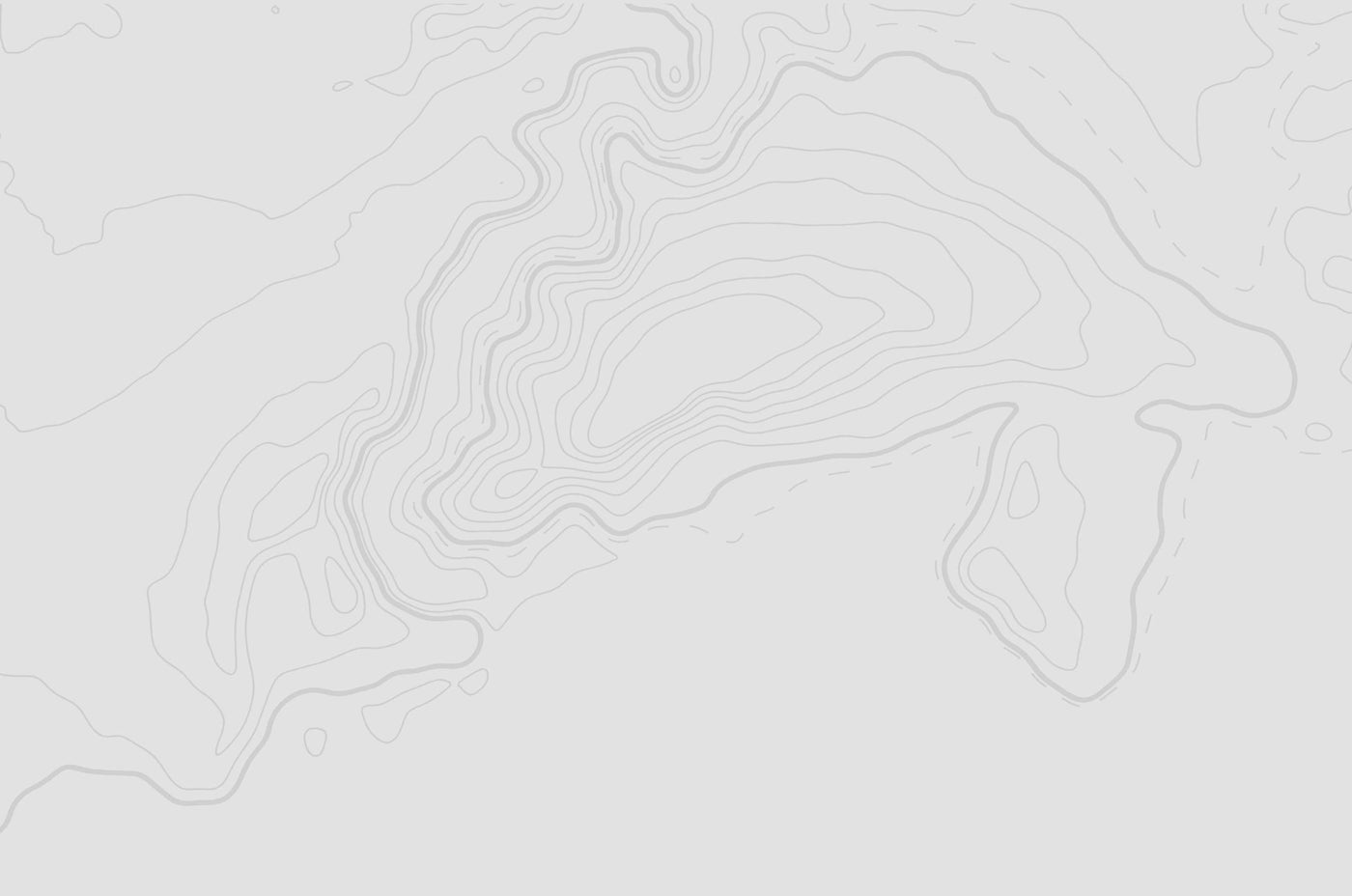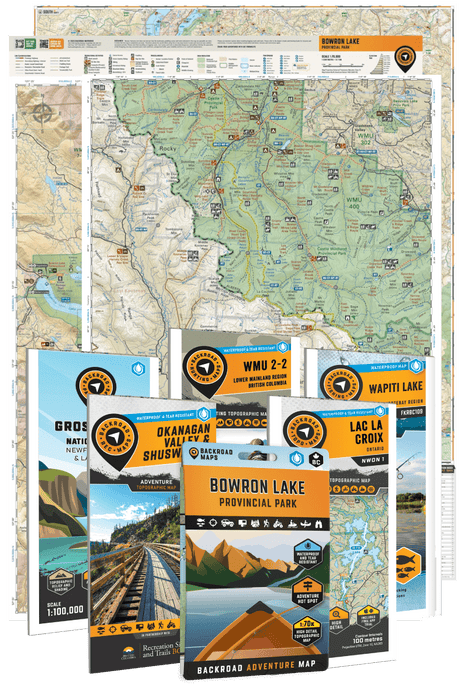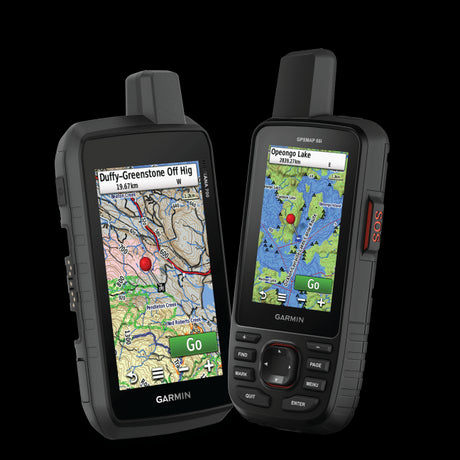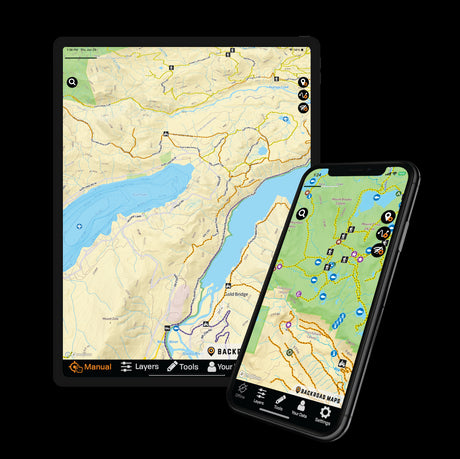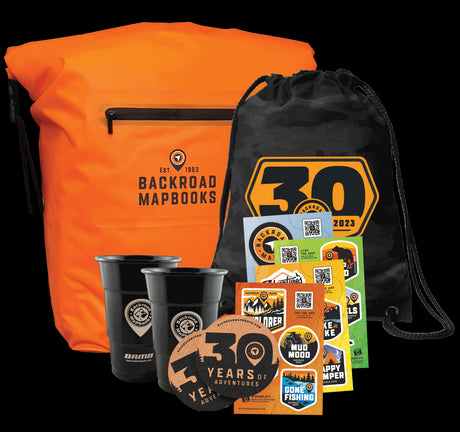Resting in a remote stretch of the Cariboo Mountains, the Bowron Lakes have long attracted paddlers in search of the perfect blend of paddling, backcountry camping, fishing and wildlife viewing. While celebrated among paddlers, the legendary canoe trip can be quite daunting to those not used to extended lake or wilderness travel. Covering 118 kilometres (73 miles), including 10 kilometres (6.2 miles) of portages, this circuit can test the mettle of any outdoors person.
Long stretches of lake travel, intermixed with a few rapids and swift currents on the river sections, unpredictable weather and the logistics of packing food and supplies for a multi-day trip only add to the challenge. However, the true reward is the peaceful escape into nature and the amazing scenery that seems to change at each corner of the Bowron Lakes Canoe Circuit.

Get Ready!
With visitors coming from far and wide, a reservation system has been set up to help limit the number of paddlers on the route at any given time. As such, advanced planning is needed to time your visit. It is recommended to allow at least a week to paddle the route to truly enjoy the experience, explore side trails and allow ample time to set up camp each night. Earlier in the year, the fishing is better and there are fewer bugs but the weather can be cooler and wet. Summer will see warmer weather but the route will be busier, the bugs more intense and the fishing slower. Later into fall, will see a return of the good fishing and fewer bugs, along with the associated cooler and damper weather.
Given the distance from most major centres, it is well advised to stay in the area the night before. The provincial park and Bowron Lake Lodge offer camping, while Becker’s Lodge offers more refined roofed accommodations. Before getting started, a mandatory orientation video and check-in with parks staff is required. Despite what is posted on the website, the park staff typically run the orientations as groups show up, earlier than the 9 am and 12 pm times that can be booked. The video gives a nice history of the park, the typical warning about bears and the river sections, along with other tidbits well worth noting.
This is followed by the weigh-in. Since trippers are not allowed to have more than 28 kg (60 lbs) of gear in their canoe during portages, it is important to pack light. Keep the clothing and food to a minimum, ensure you have a good water filtration system and put any heavier items into your backpack. Also note that there are no commercially packaged beverages allowed, so if you would like to bring a beverage or two, be sure to repackage them.


- Bowron Lake to Isaac Lake
The trip begins with a series of three gruelling portages, all of which seemed to climb more than they descended. The third is certainly the worst of the set, ending at a boardwalk that is often underwater in spring and home to swarms of vicious mosquitoes. With fully loaded canoes, rough and muddy trails and the aforementioned mosquitoes, the trip certainly sets the tone early.
If you are physically able to (and start early enough), it is recommended to paddle straight to the West Arm of Isaac Lake. This will take a full day. Alternatively, Indianpoint Lake is a good destination as there are some lake and rainbow trout to catch, along with a few nice campsites, including a coveted shelter at site 8. All sites sport bear caches so you can safely stow food and any other fragrant items away from all creatures.
- Isaac Lake to Lanezi Lake
Stretching thirty-eight kilometres, Isaac Lake is a long – very long – lake that will require at least a couple days to paddle. The fishing seems to be better at the north and northeast ends of the lake. There are many lake trout in the 2.3+ kg (5+ lb) range and the occasional large rainbow that will take anglers by surprise. This, coupled with a few really nice campsites and some terrific glacier-clad mountain scenery, make Isaac a fine destination in itself. Recommended campsites include site 15 at the north end near Wolverine River and site 29 which is also at the north end. Both sport welcoming shelters to help dry gear and to meet up with fellow paddlers.
The stretch of water between the two campsites will likely take over a day to paddle, so plan to spend more time fishing the north end or marvelling at the amazing scenery. If you are in a larger group, be sure to plan your days based on the size of campsites available. Single canoes or those travelling in pairs have a lot more options in selecting campsites. Also, be alert for woodlots to gather some wood before settling in for the night.
The south end of Isaac Lake leads to the next obstacle, the rapids or chute along Isaac River. Although many are intimidated by this short stretch of whitewater, earlier in the year they are fairly easy to run and add a little adrenaline rush to those conquering the rapids. As the river level drops, they do become quite challenging and should be portaged along a rough and rooty portage route. If you choose to run this section of the river, be sure to not miss the next takeout!
Next up is the somewhat better one-kilometre portage leading past Isaac Falls. This mandatory portage offers a tricky but rewarding side trek to the impressive falls. Below the falls, the river is much calmer and soon leads to more spectacular mountain scenery for which the route is famous for. The Isaac eventually joins with the silt-laden Cariboo River and at this point, the current picks up its pace. Outside of the occasional sweeper and shallow section, there should not be much trouble gliding down the river to Lanezi Lake.


- Lanezi Lake to Sandy Lake
Once on Lanezi, it is still a daunting five kilometres or so of still water to paddle before the next decent campsite at Turner Creek. The silty waters do not offer much in the way of fishing, but the mountain-flanked lake is as scenic as they come. Pulling into Turner Creek, there are two larger sites on either side of the creek. The western site sports a recently built shelter and some nice lakeside campsites. During lower water, there is a nice sandy beach to compliment the magnificent views of the mountain range to the south.
Like Isaac, the fifteen-kilometre-long Lanezi Lake seems to stretch on forever. Thankfully, both lakes have some amazing mountainous scenery, a few thundering waterfalls, plenty of bird life and even the odd snow cavern (at least into July) to look for. Near the west end of Lanezi, the lake narrows to a short but calm river section leading into aptly named Sandy Lake. There are a few nice campsites with large beach areas on this lake.
- Unna and Rum Lakes
Continuing on, another river section leads to the Babcock Lake portage. However, most will take the side trip to Unna and Rum Lakes. As this is the terminus of the Westside Route, there are a few larger, nicely developed campsites.
At the far end of Unna is the trail to Cariboo Falls. Outside of the initial climb, the 1.4 km hike to the 24 metres (80 ft) high falls is quite easy, and these amazing falls are a site to behold. The volume of water that cascades over the falls is incredible, as are the various viewpoints above and below the falls. Note that the trail to the lower viewpoint is not for the average trekker, as it is steep, slippery, and requires some scrambling.



- Babcock, Spectacle and Swan Lakes
Returning to the main route requires a short paddle upstream to the Babcock Lake Ranger Station and portage. Keep the river right to avoid the currents before crossing over to the portage. At this point, the portages are well maintained as park crews and those travelling the Westside Route frequent the area. However, this is also the start of what seems to be the worst section of mosquitoes. Portagers should be prepared with long sleeve shirts, pants and bug juice.
The next stretch of the route entails a series of shorter portages and lake and creek sections running through Babcock and Skoi Lake before reaching the south end of Spectacle Lake. Spectacle does offer some nice campsites, including a larger site with a shelter (site 47), and a smaller peninsula site with one of the most scenic outhouses found anywhere at the unofficially named Poundable Point (site 45).
Although shallow in nature, Spectacle and its sister to the north, Swan Lake, offer some decent fishing with lake trout and bull trout being the more common catches, at least in spring. After a day or two without good fishing, this is a welcome reprieve from the dehydrated pre-packed meals, affectionately referred to as “bags of s--t.” A nice fish dinner next to a crackling fire and a few beverages certainly help whisk away any aches and pains built up over several days of paddling.
- Bowron Lake
Where Swan Lake leads into the Bowron River offers another scenic paddle with grass-laden swamps surrounded by distant mountain peaks. Eagles, osprey, mallards, beavers and moose are commonly seen along this relaxing 4 km stretch of river travel. There are few obstacles to be wary of, but be on the alert for wildlife, including schooling rainbow trout in the river below. Those fishing are best to drag flies or small spinners near the surface.
The final seven-kilometre paddle to the north end of Bowron Lake can taunt some, especially if a north wind kicks up. If you have the BRMB Maps app, pay careful attention to the lake contours. If you pick the ‘river channel’ at the south end, you should have a good chance to catch a bull or rainbow trout here. As you round the bend of Devils Club Mountain, the dock marking the end of the canoe route is a welcome site. However, there is still one short but steep portage to the main campground and registration centre to let the park staff know you have survived the Bowron Lake Canoe Circuit!


- Helpful Hints
Here are a few helpful hints for those considering a paddle along the Bowron Lakes Canoe Circuit.

Paddling
- Certainly, a trip of a lifetime, those new to paddling should be prepared for long days of paddling, portages that will tax most and a few tricky sections of river travel.
- Be prepared for challenging portages on the north and east sides of the route. Although canoe carts come in handy, the first few climb over small hills, while the third and fourth are particularly rooty and muddy and difficult to navigate.
- Bugs seem to be at their worst between Indianpoint and Isaac Lake and then from Babcock Lake through to Spectacle Lakes.
- The weather can and does change rapidly. Be prepared for rain with tarps, rain gear, waterproof boots and 2 sets of spare clothes.
Fishing
- Fishing is at its best on Isaac Lake, although Bowron, Indianpoint and Swan/Spectacle Lakes are no slouch. Rainbow trout are prevalent, but it is the lake trout and bull trout that really added to the fishing experience.
- June is a great time for lake trout anglers as these fish are found closer to the surface, searching for smaller kokanee to feast on. Use lures that mimic these kokanee with at least 2 ounces of weight and heavier line that can withstand the odd 4.5+ kg (10+ lb) rainbow trout that seem to surface from time to time is recommended.


Camping
- Plan your days based on your group size and whether you prefer shelter or not. Those with 3 or more canoes/tents travelling together will find the campsite options somewhat limited or spread apart.
- A sharp axe and saw, along with a fire starter are helpful accessories to help get fires started when the weather is not favourable. Be alert for woodlots near your campsite and stock up before setting up for the night.
- A canoe seat with a backrest and a camping chair for sitting around the fire are ‘luxury’ items worth adding to the packing list.
- A gravity-fed water filtration system helps make collecting clean, drinking water a breeze.
Wildlife
- Wildlife, in particular moose, is more commonly seen on the south and west ends of the circuit, notably along the Cariboo and Bowron River sections.
Navigation
- A good waterproof map with campsite locations and group sizes, portages, cabins and shelter locations is essential – there is none better than the Backroad Mapbooks' Bowron Lake Canoe Circuit Map.
Happy exploring, and be sure to show us your Bowron Lakes adventures! Use #BRMBLIFE or tag @backroadmapbooks on Instagram and Facebook.

